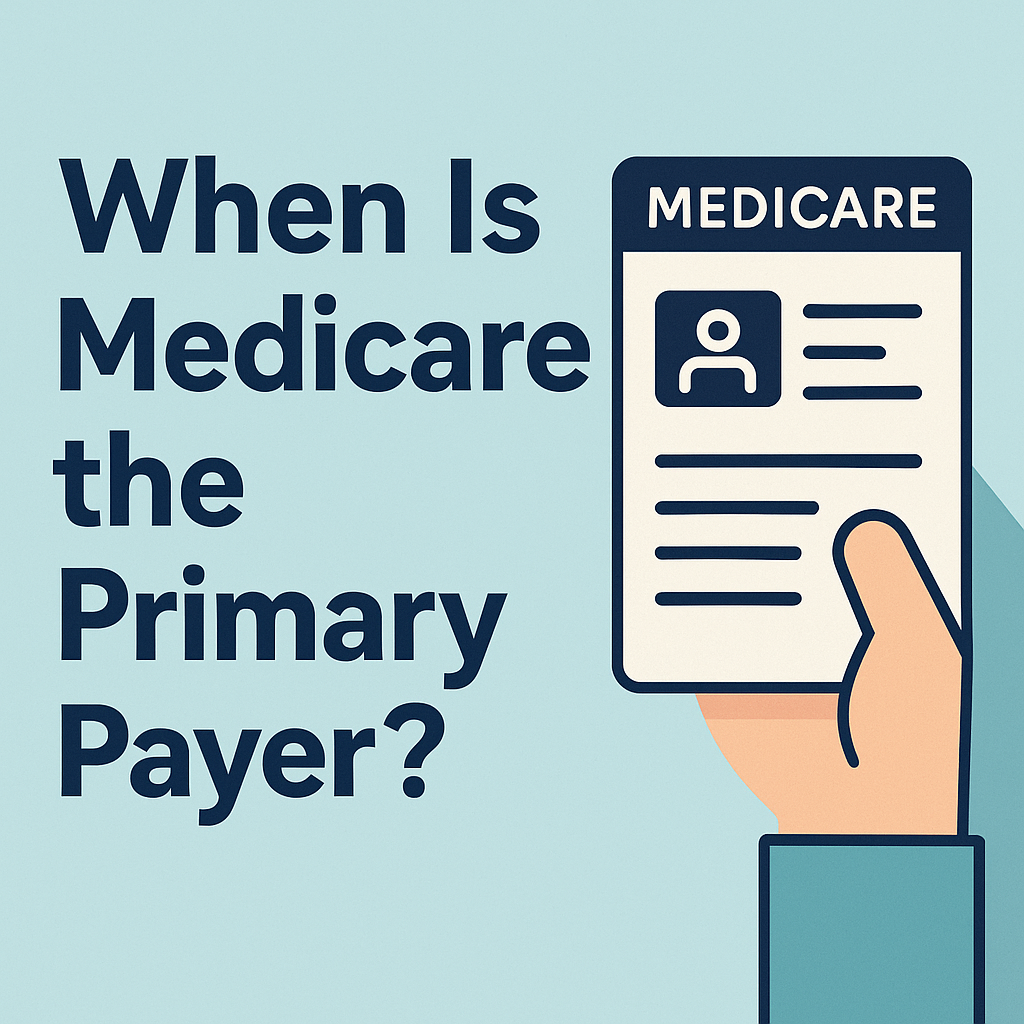Navigating health insurance billing can feel like untangling a giant ball of yarn—especially when Medicare is involved. Whether you’re a medical biller managing claims or a beneficiary trying to make sense of your coverage, one of the most important questions to understand is: When is Medicare the primary payer?
Let’s break it down—clearly, practically, and with expert-level nuance—so you walk away informed and ready to apply these rules in real-world scenarios.
Understanding the Basics: Primary vs. Secondary Payers
In the world of healthcare billing, a primary payer is the insurance that pays first. A secondary payer may cover remaining costs after the primary payer processes the claim.
So, why does this matter?
Because billing errors related to payer order can result in denials, delays, and even fraud investigations. Medicare has specific rules—but those rules change based on age, employment, disability, and condition.
General Rule of Thumb: When Is Medicare the Primary Payer?
Here’s a quick cheat sheet:
| Scenario | Is Medicare Primary? | Notes |
|---|---|---|
| Age 65+ with no other insurance | ✅ Yes | Medicare pays first |
| Age 65+ with small employer insurance (<20 employees) | ✅ Yes | Medicare is primary |
| Age 65+ with large employer insurance (20+ employees) | ❌ No | Employer plan pays first |
| Under 65 with disability and large employer plan (100+ employees) | ❌ No | Employer insurance pays first |
| Under 65 with disability and no employer plan | ✅ Yes | Medicare pays first |
| ESRD (End-Stage Renal Disease) – within 30 months of dialysis | ❌ No | Group health plan is primary |
| ESRD – after 30 months | ✅ Yes | Medicare becomes primary |
| Retiree with retiree group insurance | ✅ Yes | Medicare pays first |
| Workers’ comp or liability insurance involved | ❌ No | Those pay before Medicare |
Top Scenarios Where Medicare Is the Primary Payer
Let’s explore key examples medical billers frequently encounter:
1. Retirees with Employer-Sponsored Retiree Insurance
If a patient is retired and receiving retiree coverage, Medicare usually pays first—even if the employer plan still exists.
✅ Tip for billers: Always ask if the patient is actively employed. “Employer coverage” can mean different things in billing.
2. Small Employer Coverage (Fewer Than 20 Employees)
In companies with fewer than 20 full-time employees, Medicare is always the primary payer for workers aged 65+.
⚠️ Billing Risk: Assuming group plans always pay first is a common error.
3. Disabled Individuals with No Large Employer Plan
If someone is eligible for Medicare due to disability, and they don’t work—or work for a company with fewer than 100 employees—Medicare will usually be primary.
4. End-Stage Renal Disease (ESRD) Patients
A very specific rule applies here:
- First 30 months of dialysis: Group plan is primary.
- After 30 months: Medicare becomes primary.
📌 Billers Note: Keep track of the “coordination period” start date. Missteps here are audit triggers.
5. COBRA Coverage or Individual Market Insurance
Medicare is typically primary when the patient has COBRA or a private plan from the Marketplace.
💡 Why? These aren’t active group health plans tied to employment.
Exceptions to Know: When Medicare Is Not Primary
Even though Medicare is often the go-to payer for seniors and disabled individuals, several exceptions flip the script:
- Active Employment with a Large Employer
- Accidents covered by liability insurance (e.g., car accidents)
- Workers’ compensation claims
- Veterans Affairs (VA) coverage for service-related treatments
🔍 Biller Tip: When in doubt, look for an MSP (Medicare Secondary Payer) Questionnaire. It’s your roadmap.
How to Verify Medicare Primary Payer Status
Misbilling the payer order causes chaos. Here’s how to stay ahead:
✅ Steps to Determine Payer Order:
- Ask the Right Questions:
- Are you working?
- Who provides your health insurance?
- Is this coverage through your current employer?
- Use Medicare’s MSP Guidelines:
The Medicare Secondary Payer Manual is your Bible. CMS offers decision trees that guide you step-by-step. - Check with the Coordination of Benefits Contractor (COBC):
1-800-MEDICARE or the patient’s MyMedicare account can confirm coverage type. - Request a HIPAA Eligibility Transaction (270/271):
This electronic verification provides real-time payer order data.
Real-Life Billing Example: Medicare vs. Employer Coverage
Scenario:
Mrs. Smith is 67 and works at a local bakery with 15 employees. She has employer health insurance and Medicare.
Who pays first?
Medicare. The employer has fewer than 20 employees, so it’s not required to pay primary.
💬 “I once had a claim denied because we assumed her group plan was primary,” a seasoned biller shared. “Now we always verify employer size first.”
Benefits of Medicare as Primary Payer
- Faster claims processing
- Predictable reimbursement
- Easier to code and bill within Medicare rules
- Often lower out-of-pocket costs for patients
But beware: billing Medicare first when it’s secondary can result in claim rejection and recoupment.
Common Pitfalls for Billers (And How to Avoid Them)
- Assuming based on age, not employment status
- Forgetting the 30-month ESRD coordination period
- Mixing up COBRA or retiree coverage with active employer plans
- Failing to update MSP files
🚨 Pro Tip: Add “MSP status verification” as a required field during patient intake.
Key Takeaways: How to Know If Medicare Is Primary
- Medicare is primary when there’s no large group plan tied to active employment.
- Retirees, disabled individuals, and those with COBRA or private insurance often have Medicare as their primary payer.
- Always confirm with MSP forms, COBC, or electronic eligibility tools.

